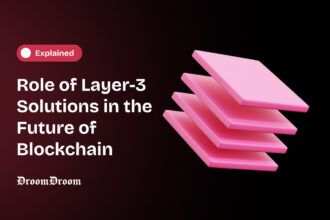The idea of requiring multiple signatures for authorization is not new and has been used in various forms before blockchain technology. For example, joint accounts or escrow services often require multiple signatures to authorize transactions in traditional banking and finance. However, these systems were centralized and relied on intermediaries.
- Understanding Multisignature Technology
- Security in Cross-Chain Transactions Using Multisignature Technology
- Decentralized Trust and Consensus
- Enhanced Security Protocols
- Risk Mitigation in Cross-Chain Transactions
- Recovery and Redundancy
- MoonTON: Leveraging Multisignature Security for Cross-Chain Transactions
- The Role of the Multisig Attestation Committee
- How MoonTON’s Multisig Process Works
- Engineering Powerful Cross-Chain Security
- The Role of Multisignature Technology
- The Growing Importance of Multisignature Technology in Blockchain Security
Multisignature security for cross-chain transactions provides a decentralized solution that raises security by eliminating single points of failure.
Multisig can be compared to a secure vault that requires multiple keys to open. It ensures that no single entity can unilaterally control a transaction. Its importance is undeniable in scenarios requiring the highest levels of security, such as managing digital assets, decentralized finance (DeFi) operations, and cross-chain transactions.
Not to mention, this is also a significant improvement over the traditional single-signature system (such as entering a PIN or signing a check). While the latter approach is faster and less complex, it is also less secure.
In the blockchain world, where transactions are irreversible and often involve significant sums of money, this single point of control can be catastrophic. Multisig blockchain security reduces the risk of fraud, theft, and unauthorized access.
In this article, we will be discussing the role of multisignature security for cross-chain transactions using a case study of the MoonTON platform which employs it as a cornerstone of its security architecture.
Understanding Multisignature Technology
Multisignature technology, commonly called “multisig,” is critical in improving security across various blockchain applications. The basic principle behind multisig blockchain security is that it requires multiple private keys to authorize a transaction, thus distributing control and reducing the risk associated with a single point of failure.
For example, consider a multisig wallet securing $10,000 in Bitcoin. Suppose a multisig address is configured with three keys: one held by the user, another stored securely, and a third managed by a trusted service provider. To authorize any transaction, at least two of these three keys must be used, significantly decreasing the likelihood of funds being lost due to theft or hacking.
This concept is directly applicable to more complex systems like MoonTON, where multisignature security for cross-chain transactions is utilized to secure cross-chain transactions between different blockchain networks. By requiring multiple validators to approve a transaction, MoonTON not only enhances security but also ensures that no single entity can compromise the system.
Security in Cross-Chain Transactions Using Multisignature Technology
By requiring multiple parties to authorize a transaction, multisignature security for cross-chain transactions adds a layer of trust and reliability, making it an essential mechanism in the blockchain ecosystem, especially in scenarios where assets are transferred between different blockchains.
Decentralized Trust and Consensus
In a typical cross-chain transaction, the involvement of multiple blockchains increases the complexity and potential vulnerabilities. Each blockchain operates under its security model, and the transaction must be secure across all participating chains.
Multisig technology addresses this challenge by requiring multiple signatures from different parties before a transaction is executed. This mechanism is not just a feature of multisig wallets but a fundamental aspect of multisig blockchain security itself.
Whether applied within a wallet or a cross-chain bridge, the requirement for consensus among multiple signatories ensures that all parties involved in the transaction agree to its validity, essentially preventing unauthorized or fraudulent transactions.
Enhanced Security Protocols
Each signatory involved in a multisig transaction can be required to perform different authentication methods, such as biometric verification, hardware tokens, or other security measures. This diversity in authentication methods ensures that even if one method is compromised, the overall multisig blockchain security of the transaction remains intact.
Multisignature technology isn’t just an additional layer of security—it’s the foundation of trust in a decentralized ecosystem. In a world where digital assets move seamlessly across blockchains, relying on a single point of control is not only risky but outdated. It’s about creating a system where security is baked into every transaction, making it not worth the attacker’s time, and too costly to compromise.
Joseph Merman, CEO of MoonTON
Risk Mitigation in Cross-Chain Transactions
Multisignature security for cross-chain transactions requires multiple approvals before a transaction can be completed, introducing a delay that, while minimal, provides a window for detecting and responding to potential security threats. This delay can be a beneficial trade-off for the increased security it offers.
In the event of a security breach on one blockchain, the multisig system prevents the breach from compromising the entire transaction.
One practical example is the use of multisig in cross-chain bridges, which facilitate the transfer of assets between different blockchains.
For example, MoonTON which is a cross-chain bridge specifically designed with a focus on interoperability between the TON and other blockchains, relies on multisig technology to ensure that all parties involved in the transaction agree before the transfer is completed.
Recovery and Redundancy
Traditional single-signature systems risk permanent asset loss if a private key is lost. Multisig blockchain security mitigates this by allowing for redundancy in key management.
The collapse of QuadrigaCX, where the sudden death of the sole key holder ensued in the loss of $190 million in customer funds, serves as a stark reminder of the risks associated with single-signature systems. Multisignature security for cross-chain transactions mitigates such ‘key person’ risks by requiring multiple approvals for transactions, ensuring that no single point of failure can jeopardize an entire system.
In a multisig setup, as long as the required number of signatures (M-of-N) is obtained, a transaction can still proceed even if one or more private keys are lost or compromised. This redundancy is particularly valuable in the complex environment of cross-chain transactions, where the stakes and risks are higher.
This principle is central to MoonTON’s design, where multisig is employed to secure cross-chain transactions by distributing control across multiple validators.
MoonTON: Leveraging Multisignature Security for Cross-Chain Transactions
Multisignature (multisig) technology is familiar to many as a method for securing wallets, but MoonTON takes this concept further, tailoring it specifically for the challenges of cross-chain transactions. MoonTON’s architecture is designed to handle the complex security demands of transferring assets across different blockchain networks.
Given the critical role that MoonTON plays in enabling secure and efficient cross-chain transactions, the platform has integrated multisignature security for cross-chain transactions into its core architecture to enhance security and ensure the integrity of its operations.
The Role of the Multisig Attestation Committee
At the heart of MoonTON’s security model is the Multisig Attestation Committee, a group of validators responsible for verifying and authorizing transactions within the network.
Unlike traditional single-signature systems, where a single entity can authorize a transaction, MoonTON’s multisig blockchain security requires a majority of the committee members to approve any transaction before it can proceed. This distributed approach ensures that no single validator has unilateral control over asset movements.
How MoonTON’s Multisig Process Works
When a user initiates a cross-chain transaction on MoonTON, such as transferring tokens from Solana to TON, the following steps occur—
- Locking: Tokens on the source blockchain (e.g., Solana) are locked in a smart contract, which triggers a notification to the Multisig Attestation Committee.
- Validation: The committee reviews the transaction details, verifying the legitimacy of the lock event, user identity, token amount, and destination address.
- Signing: Once satisfied with the transaction’s validity, each validator signs it using their private key. A majority, such as 3-of-5 signatures, is required to approve the transaction.
- Minting: The corresponding tokens are then minted on the destination blockchain (TON), completing the cross-chain transfer.
By requiring multiple validators to sign off on each transaction, MoonTON ensures that no single entity can unilaterally control the movement of assets within its network.
Engineering Powerful Cross-Chain Security
MoonTON’s multisignature security for cross-chain transactions is built on a sophisticated architecture that integrates several key components to ensure the security and efficiency of cross-chain transactions.
The following are the technical aspects of how MoonTON’s multisig approach works—
Streamlined Signing Process
Each validator holds a private key used to sign transactions. The process begins with transaction initiation, followed by independent verification by each validator. Validators confirm details such as source and destination addresses and the amount of tokens.
The transaction then requires a consensus through a Threshold Signature Scheme—a predetermined minimum number of signatures for execution.
Ensuring Transaction Integrity: Validation Mechanisms
The validation mechanism in MoonTON makes sure that only legitimate transactions are approved. Validators cross-reference transaction details with blockchain records, checking for signs of fraud or tampering and confirming user authenticity.
MoonTON’s high-threshold requirement for approval (e.g., 3-of-5 signatures) ensures powerful multisig blockchain security, reducing the likelihood of fraudulent transactions.
The Role of Multisignature Technology
The deployment of multisignature technology in MoonTON has several important security implications and benefits—
- Double-Spending Prevention: Multisig prevents double-spending, a critical concern in cross-chain transactions, by requiring multiple validators to approve each transaction.
- Protection Against Unauthorized Transactions: With multisig, even if a malicious actor gains access to one key, they cannot execute a transaction without the approval of the other validators.
- Resilience Against Validator Compromise: In the event of a validator being compromised, the multisig system ensures that the transaction process remains secure and that other validators can prevent unauthorized activity.
- Staking and Slashing Mechanisms: To further enhance the security of its multisignature security for cross-chain transactions system, MoonTON incorporates staking and slashing mechanisms.
Validators must stake a portion of their funds, which aligns their interests with the network’s integrity. Should a validator engage in malicious activity, such as attempting to authorize a fraudulent transaction, a portion of their staked funds may be forfeited, effectively penalizing them and safeguarding the network.
The Growing Importance of Multisignature Technology in Blockchain Security
The rising importance of multisignature technology in blockchain security is hard to ignore, especially in complex cross-chain environments. The hardcore engineered platforms like MoonTON showcase how multisig blockchain security can be effectively applied to real-world applications, offering enhanced security and reliability.
Recent data shows that a significant portion of Bitcoin holdings is now secured using multisig-enabled P2SH (Pay-to-Script-Hash) addresses. Over the last month, the amount of BTC held in these addresses has fluctuated around 4.25 million, indicating a sustained reliance on multisig as a critical security measure for large-scale and institutional transactions.
This shows that the need for secure, decentralized transaction systems becomes ever more critical. Multisig technology, with its ability to distribute control and mitigate risks, is well-positioned to be a key component in the future of blockchain security.
For developers, investors, and users alike, the multisig approach offers a robust framework for safeguarding assets, ensuring that blockchain technology can be trusted to handle the complexities of modern digital transactions.
Looking forward, multisig will play a pivotal role in the development of new blockchain applications, driving innovation and adoption across the industry. In conclusion, the adoption of multisignature security for cross-chain transactions by platforms like MoonTON underlines the importance of distributed control in securing digital assets.




















